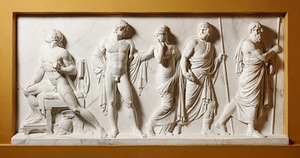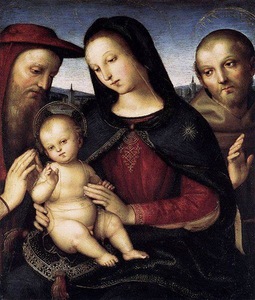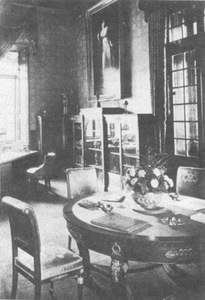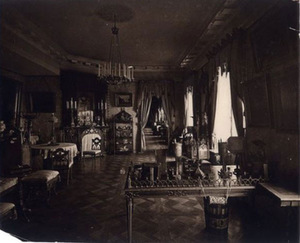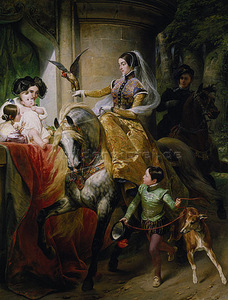Power and riches - collections of kings and noblemen (Part II) 4
In brief: Collections of Lithuanian aristocrats were as valuable as those of the old European families. Several years ago, Meadows Museum (USA) organized an exhibition of one of the oldest noble European families - Dukes of Alba (Spain) - collection, which they accumulated for more than 500 years. The interest exceeded the expectations. Meanwhile, the time seems to be standing still at the count Oginskiai' art treasures’ exhibition presented at the M. Žilinskas Gallery. Our country, which has preserved a magnificent history still turns away from the heritage of its aristocrats, who helped us integrate into the Western culture.
After Europe was rocked by the Ancien régime revolution, the changes were felt not only by the absolute monarchy, but also by the general public. King's riches pulsating with luxury was no more a surprise to anyone, because both, the higher aristocracy and the new bourgeoisie were decorating their chamber environment with sumptuous relics.
Kaunas M. Žilinskas Art Gallery exhibits a part of collection that used to belong to Pakruojis manor owners, barons von Ropp (3 sculptures and 19 paintings). This manor was famous for its collections of painting, graphics and sculpture. Its initiator, Baron Theodor von der Ropp (1783–1852) brought Italian, Dutch and French paintings from his travels in France, Italy and Spain from 1801.
The most valuable part of von Ropp's collection was moved to Šeduva manor in 1859 and later continuously augmented and sold, traveling through various family estates in Lithuania and Latvia. From the sold artworks only a few are known to have gone to the public German and Italian collections. One of such works is Rafaelio Santi's Madonna with child and saints (1502) or simply von der Ropp's Madonna.
Count Mykolas Tiškevičius (1826–1897) was passionately interested in Egyptology; he was not only buying the antiquities himself but also received them as gifts from a Russian vice-consul in Cairo and after participating in the unfolding of the mummy, everything that was found in the swathes went to the count. This complemented his rich collections, for example, the collection of scarabs.
Meanwhile, Eustachijus Tiškevičius' (1814–1873) interests were determined not only by his Brother K. Tiškevičius' Museum, but also by political events in Lithuania. The count, who was collecting various relics since his early years called his collection "a cabinet of country’s antiquities." A significant place in the collection was taken by the digs found in the Lithuanian barrows (1008 pieces): stone weapons, silver women's jewelry and etc.
Verkiai and Vaitkuškis manors were famous for their colorful collections. Verkiai palace, having a long history of patronage were named the Lithuanian Hermitage in the 19th century. The appearance of collections was determined by the union of two - Lithuanian and German - families.










